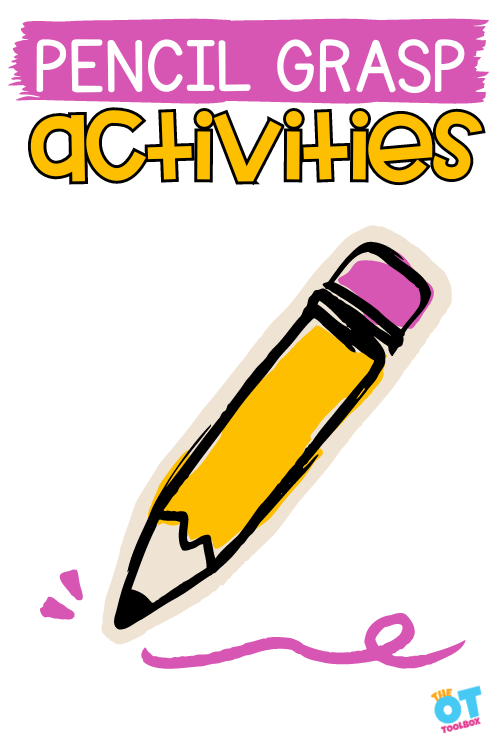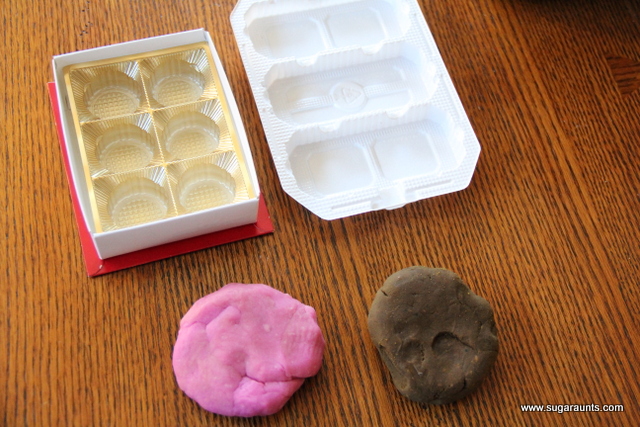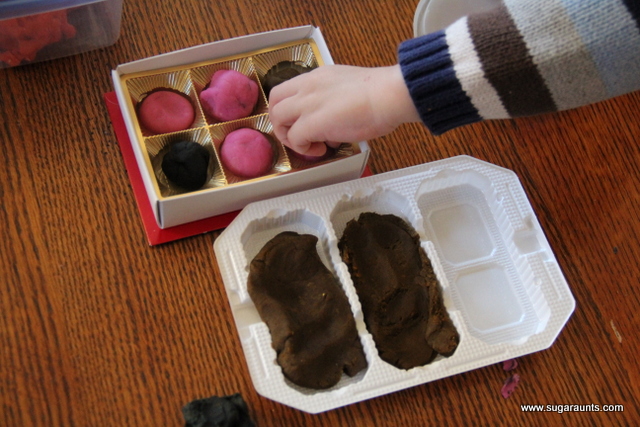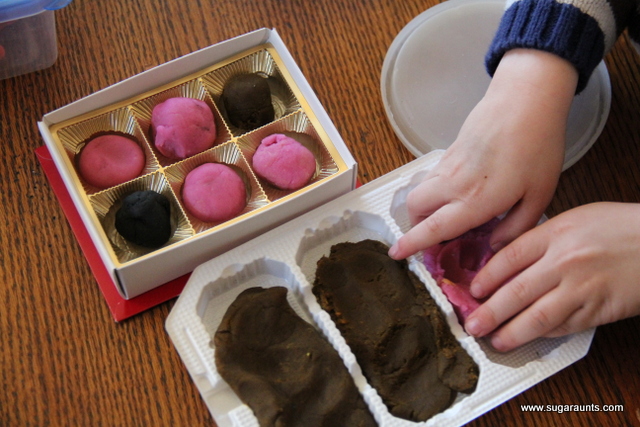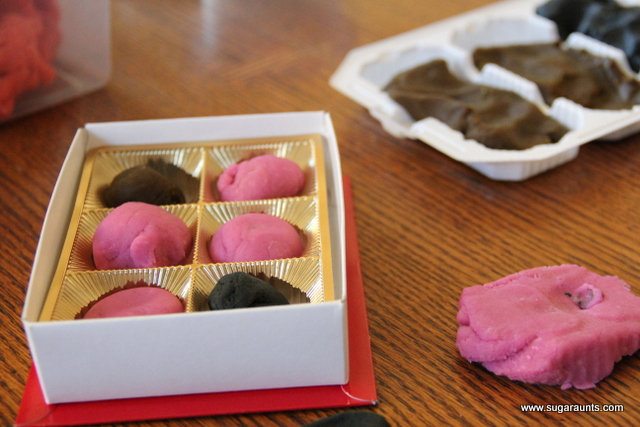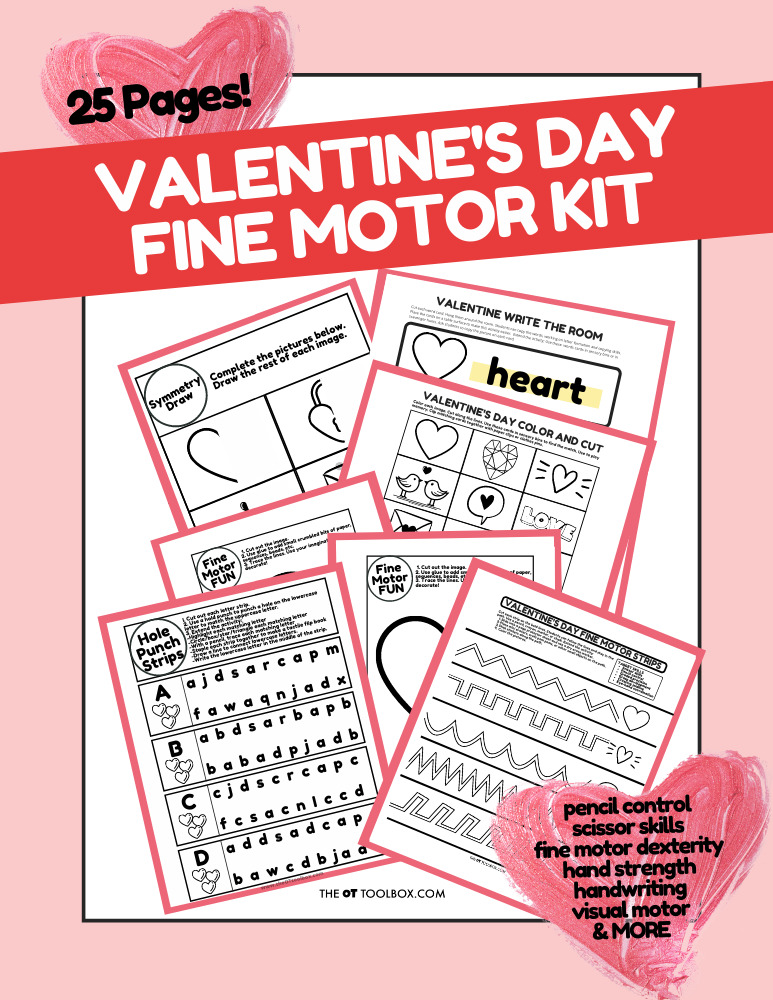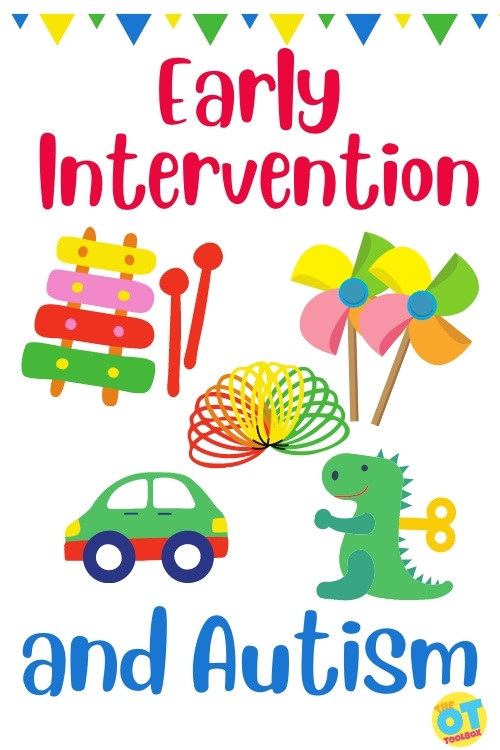Have a candy box you are itching to use to develop fine motor skills? Here is a fun Valentines playdough activity that gets the hands moving and developing fine motor skills. This fun activity can be used in occupational therapy activities to develop a variety of skill areas, using a recycled candy box and Valentine’s Day play dough!
Be sure to grab these printable Valentine’s Day cards, for more holiday fun.
Have you ever had a candy tray, chocolate gift box, cupcake holder, or other container and wondered if you can use it in play? Incorporating Valentine’s Day activities into occupational therapy sessions is fun with interactive play ideas like this one. We used a chocolate gift box as a Valentine’s day play dough activity with a fine motor component. Pair this chocolate themed activity with our hot chocolate craft for more fine motor fun.
After you make this Valentines playdough, use the pink and red playdough with our new Valentine’s Day fine motor paths. Users can roll small balls of play dough and place them along the paths while working on in-hand manipulation, precision, hand strength, eye-hand coordination, and more. Simply print off the pages, slide them into a page protector sheet, and use your play dough.
It’s a LOVE-ly activity for building hand strength!

Valentines Day PlayDough
Valentine’s day activities for kids can be a fun way to work on skills like fine motor strength or eye-hand coordination. Take this heart maze or instance. This is an easy prep activity that can be upgraded or downgraded for each child’s needs and levels while working on visual perceptual skills and eye-hand coordination with a heart theme.
One out of the box (candy heart box?) way to use this activity is along with our Valentines Day I Spy. Use balls of the Valentines Day playdough to place on objects on the worksheet.

Creating this play dough activity is easy. Make a set of colored play dough. Our crayon play dough recipe will get you set up with literally any color in the crayon box.
You could also use store-bought play dough, or make a flour dough recipe.

Valentine’s Day Fine Motor Activity
Playing with play dough and rolling small balls of play dough is a great way to build fine motor strength, especially intrinsic hand strength.
The sky is the limit when it comes to this open-ended play activity. Encourage imagination and play in a fun, Valentine’s Day theme!
Kids can press the dough into the trays to strengthen the hands, work on finger isolation, separation of the sides of the hand, and more.
How to Make Valentines Play Dough
While this activity is low-prep, you’ll want to start with play dough in red, pink, white, and brown colors to make the playdough chocolates and heart decorations. To make the homemade playdough, you can start here with our best homemade playdough recipes.
Select a dough recipe and get the kids or clients involved in mixing up the playdough.
Most homemade dough recipes call for these ingredients:
- Flour (typically all purpose flour works well, but gluten free flour options work, too)
- Water (hot water or boiling water that has cooled)
- Cream of Tarter
- Vegetable Oil
Mix up the ingredients and start kneading. This is such a great calming activity for children, because when kids knead playdough, they are gaining heavy work through the joints of their hands. Coupled with warm playdough, it is a powerful calming activity to add to your built-in sensory diet.
Invite your kiddos to use their imagination. Can they make teeny tiny sprinkles from the play dough? Hellloo, precision and fine motor work!
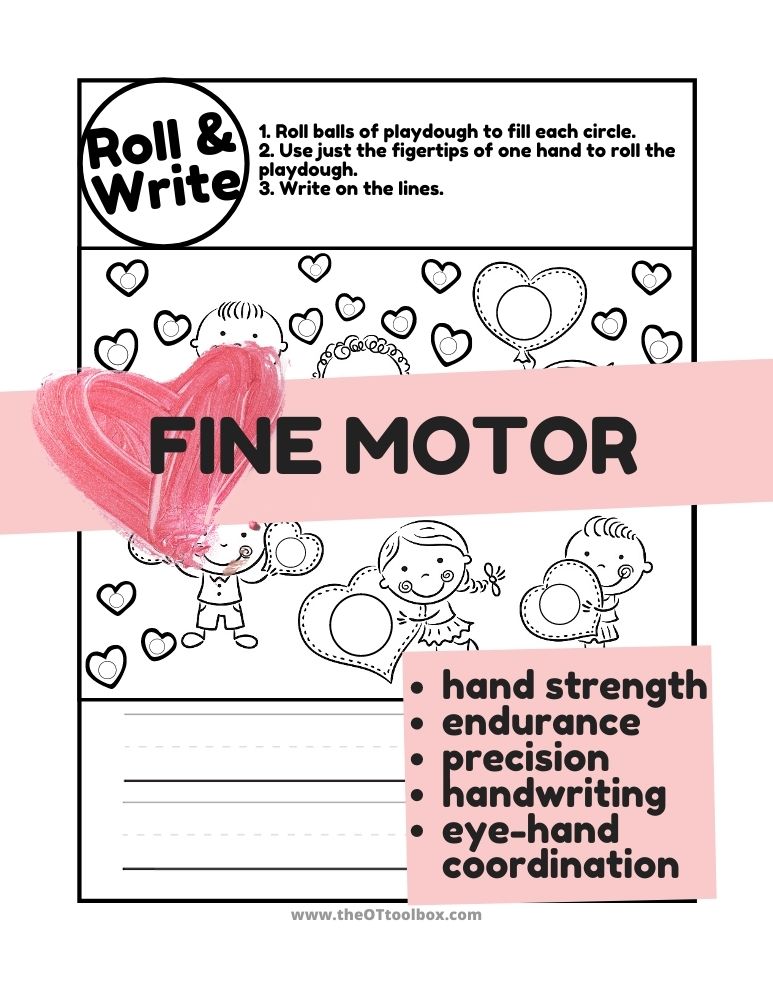
Kids can then roll the balls of play dough using just their fingertips to build intrinsic strength, eye-hand coordination, separation of the sides of the hand, and arch development. There are so many fine motor skills being refined and developed by using small balls of play dough and a play dough mat like the one found in our new Valentine’s Day Fine Motor Kit.
Use the play dough to make play dough chocolates, candies, chocolate bars, or other treats from play dough.
They look good enough to eat, right??? Use the dough to roll balls of “chocolates” using just the fingertips. It’s a great way to work on separation of the sides of the hands, intrinsic strength, and arch development.
More Valentine’s Day occupational therapy activities
- Valentine’s Day Snacks
- Valentine’s Day Sparkle Fine Motor Craft
- One Zillion Valentines Craft
- Valentine’s Day Fine Motor Busy Bag
- Heart Visual Perception Maze
More fine motor activities for building skills
To add more fine motor skill work to your Valentine playdough, try these ideas:
- Mix in glitter
- Freeze the dough and use scissors to cut hearts
- Add manipulatives like ribbon, beads, or small objects to decorate the playdough cookies and candies.
- Set up your own “Sweet Shop”! Write down ingredients to work on handwriting skills. Mix the playdough to make different colored candies, and sort the play dough balls into candy holders. You can work on so many skill areas this way!
- Set up a dough invitation as an invitation to play and build skills. This is a great therapy activity for small groups or for morning centers.
- Get kids involved in making the homemade playdough. There are many ways to develop executive functioning skills and fine motor skills by making play dough. Our crayon playdough recipe is very popular.
Want to add more Valentine’s Day activities and movement tools to your skill-building?
The Valentine’s Day Fine Motor Kit is here! This printable kit is 25 pages of hands-on activity sheets designed to build skills in pinch and grasp strength, endurance, eye-hand coordination, precision, dexterity, pencil control, handwriting, scissor skills, coloring, and more.
When you grab the Valentine’s Day Fine Motor Kit now, you’ll get a free BONUS activity: 1-10 clip cards so you can challenge hand strength and endurance with a counting eye-hand coordination activity.
A final note on Valentines Playdough
This Valentine play dough activity is cheap and low-prep way to build skills. All you need is a recycled candy container to work on skill-building during the month of February. It’s easy, fun and only takes a few minutes, but kids will LOVE the activity. Paired with some scissors, beads, and heart shaped cookie cutters, it is absolutely adorable. This would make a great DIY Valentine’s Day gift for a therapy caseload because the activity can be easily adapted to meet a variety of needs. Use it in a class party, as a fun “home therapy” recommendation, or in a play group.
Add scented oils or essential oils to the play dough and you’re covering other senses, as well. Valentine’s Day Scented Playdough can be a motivating and fun therapy tool for clients.

Colleen Beck, OTR/L has been an occupational therapist since 2000, working in school-based, hand therapy, outpatient peds, EI, and SNF. Colleen created The OT Toolbox to inspire therapists, teachers, and parents with easy and fun tools to help children thrive. Read her story about going from an OT making $3/hour (after paying for kids’ childcare) to a full-time OT resource creator for millions of readers. Want to collaborate? Send an email to contact@theottoolbox.com.

